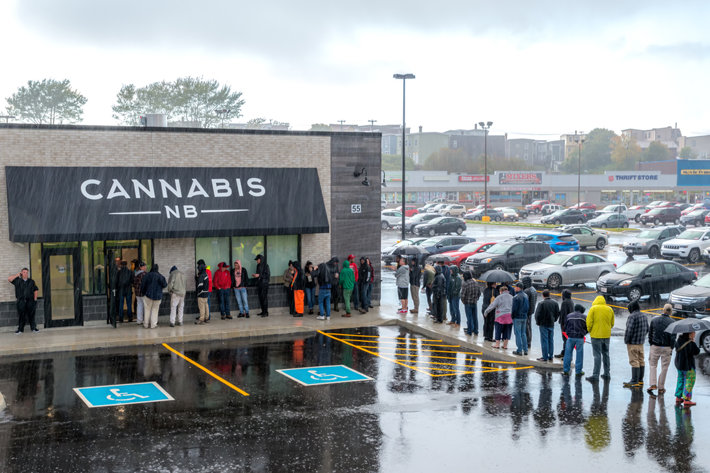What Is the Scope of Drug Abuse in Canada?

Addiction can touch down anywhere. No country, no matter how good the quality of living is for its residents, is safe from addiction. While Canada ranks above the international average in housing, personal security, health status, social connections, environmental quality, jobs, work-life balance, civic engagement, income, and wealth, the Canadian people also struggle with a severe addiction crisis.
What exactly is the scope of addiction in Canada? And what is the best path to freedom for Canadians who are hooked on drugs and alcohol?
The Prevalence of Substance Abuse in Canada
The Canadian Department of Justice compiles data on the prevalence of drug use in Canada, not just as a general occurrence, but also broken down to examine the prevalence of different drug use types. Much of this data comes from other governmental institutions, then the data is presented by the Department of Justice to provide a rapid assessment of Canada’s drug crisis. Here’s a quick look at the relative percentages of younger Canadians who experiment with mind-altering substances:

Among adolescents and teens, cannabis, hallucinogens, and stimulants are the most common drugs of choice. According to the data, almost one-third of students in grades 7 to 13 had used cannabis in the past year. For hallucinogens, about one-in-six students have experimented with this drug. And for stimulants, about one-in-ten Canadian students admitted to experimenting with such drugs.
The trend of drug use becomes more prominent among college-age Canadian youth. Depending on where they live, anywhere from 31 to 36 percent of Canadian college students report using cannabis at least once in the month leading up to the survey, and ten percent report using drugs other than cannabis.
The Canadian Centre for Addiction and Mental Health draws a strong connection between addiction and mental crisis, emotional struggles, and behavioral difficulties. According to their data:
At any given time, about one in five Canadians struggle with addiction. Among the Canadian population, young people ages 15 to 24 are the most likely to struggle with substance abuse problems.
Addiction is a leading cause of premature death in Canada, with a crisis of this nature cutting as much as 10 to 20 years from a person’s life expectancy. For adults from the age of 25 to 34, one in every eight deaths is related to opioid use. The burden of addiction in just one Canadian province, Ontario, is 1.5 times higher than all cancers combined. “Burden” is calculated by years lost due to premature death and years lived with less than full function.
Unfortunately, even though addiction is severe and quite common in Canada, there is a significant gap in access to treatment services. While addiction and its attendant mental crises account for ten percent of Canada’s healthcare demands, it only receives about seven percent of total healthcare dollars. Meanwhile, the cost of substance use to Canadian society is estimated at about $38.4 billion per year.

Another research organization, Statistics Canada, offers insight into the scope of drug use and alcohol misuse in Canada. According to their data, about six million Canadians meet the criteria for an addiction to drugs or alcohol. That number represents about 21 percent of the Canadian population (or one in five Canadians). Alcohol was cited as the most common drug of choice.
Last but not least, Canada has felt the effects of the opiate crisis that is sweeping the rest of the world, particularly the western world. According to one study published in the U.S. Library of Medicine, about 2,861 Canadians died from opioids in 2016, with about 16 opioid-related hospitalizations every day.
Drug Treatment—The Solution to Drug and Alcohol Addiction in Canada
Drug and alcohol addiction should be avoided at all costs. However, when someone you care about does fall prey to addiction, the crucial step that must be taken to help them is to get them into a drug and alcohol rehab center. Drug and alcohol addiction is extremely dangerous and life-threatening, and it’s a crisis that the individual cannot fully confront on their own. That’s why rehab is so important and so necessary to save someone’s life from addiction and substance abuse.
This is where Narconon comes in. For over half a century, Narconon has applied a unique drug and alcohol rehab program to help people overcome addiction and to give them their lives back. By addressing both the underlying issues that caused the person to start using drugs and alcohol in the first place and the real-time, physiological and chemical aspects of addiction, Narconon offers a successful program that helps recovering addicts tackle all of the many aspects and facets of their drug use.
Sources:
- http://www.oecdbetterlifeindex.org/countries/canada/
- https://www.justice.gc.ca/eng/rp-pr/csj-sjc/jsp-sjp/qa02_2-qr02_2/p2.html
- https://www.camh.ca/en/driving-change/the-crisis-is-real/mental-health-statistics
- https://www150.statcan.gc.ca/n1/pub/82-624-x/2013001/article/11855-eng.htm
- https://www.ncbi.nlm.nih.gov/pmc/articles/PMC6034966/


 ®
®